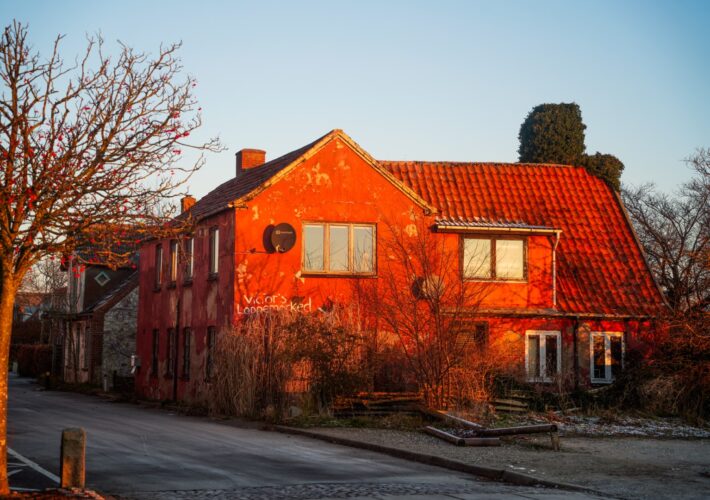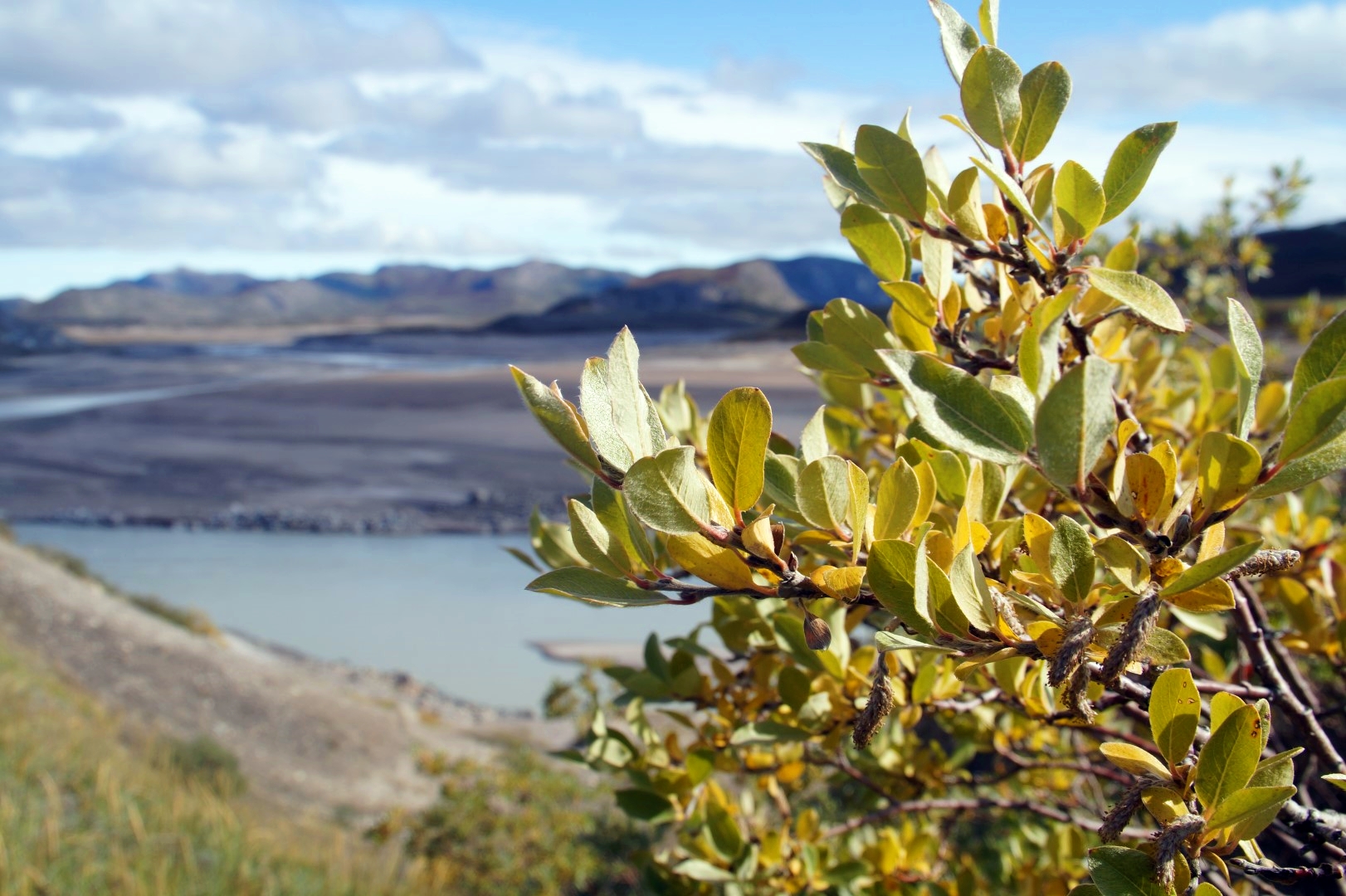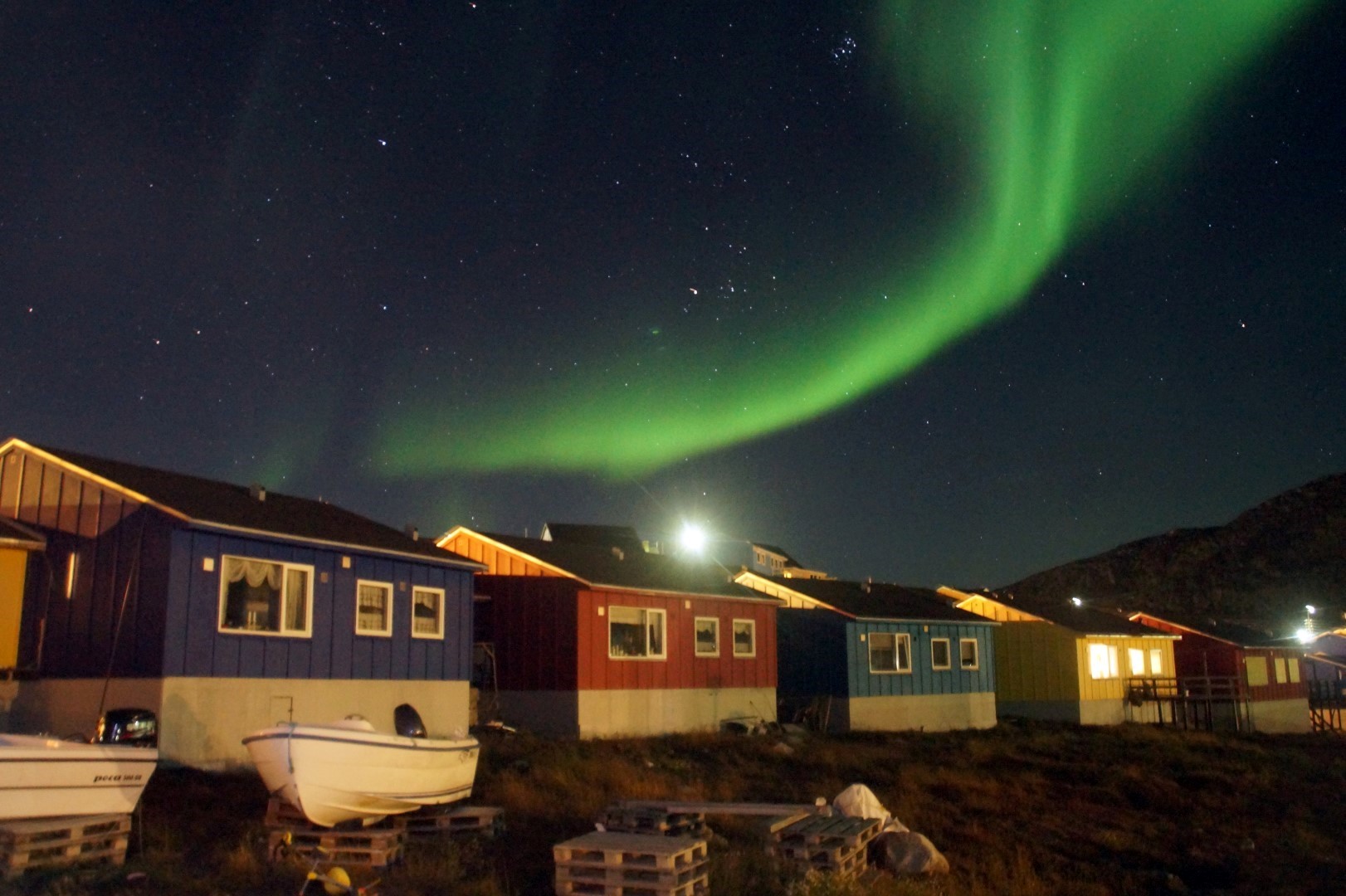On a Saturday afternoon in Late September, I set off on a small boat with a group of other exchange students to visit two abandoned settlements near Nuuk. If there’s something I really love exploring, it’s abandoned places, so I couldn’t turn down an opportunity to see Kangeq and the Island of Hope, especially because these two are historically important locations.
The trip out to Kangeq, our first stop, took only 45 minutes, although it felt much longer because of the high waves that almost made Charlotte spill her tea all over herself. Thankfully nobody was sick and we got there without any tea accidents.
Kangeq was once a thriving village and in the mid 19th century, it was home to the artist and hunter Aron, whose famous paintings told stories of traditional myths and legends. The village flourished for over 200 years until it was abandoned in the 1960s due to industrialization and urbanization, much like many other small villages in the country.
Kangeq is a place where time stands still. But the deserted houses remind one of a glorious past in a place so remote, it's hard to believe that people could actually live there for so long. Today, the village houses still stand. The church still stands. But the colourful paint has faded and the interiors have been destroyed little by little as people came back to collect furniture and wood for their new homes in the city. Only the tiny church had one bench and parts of the altar left.
But Kangeq is actually no longer abandoned, at least not all year. A few houses are kept nice for the families that still go back there to hunt or simply to get away from the city, to relax in complete silence. A Greenlandic flag on a porch confirmed that someone was home. But living there isn't easy, even today. You'll have to catch your food, collect your water and thrive in your own company. No internet, no tv, just you, the islands and the birds. To me it sounds like a dream.






After spending an hour peeping into windows and entering the doors that were left open, it was time to leave Kangeq behind.
Since the waves were very high, our captain wasn’t sure whether or not we could reach the Island of Hope, which is further out to sea, but he promised to give it a try. Luckily we made it out there easily and the waves didn’t even hit that hard.
The Island of Hope formed the site of Hans Egede's first settlement on Greenland, when he first arrived in the country on July 3rd 1721. He was a Lutheran missionary, who went to Greenland to find the descendants of the Norse people, who were believed to still live there in the darkness of Catholicism. But he found no Norse people, only Inuits. The Norse people had disappeared from the country, and the reason for this is still a mystery. But despite that, Hans Egede didn't turn back; instead he became the first European settler since the Norse and established a successful mission among the Inuit. His arrival marked the beginning of the colonization of Greenland.
Hans Egede and his family lived on the barren island for seven years, until the settlement was relocated to the mainland in 1728, when Nuuk was founded.
We were given an hour to explore the area, where there’s not really that much to see apart from the foundation of Hans Egede’s house and a cenotaph from 1921 marking the 200-year anniversary of the settlement. But the area is absolutely beautiful, so I was happy to get the chance to explore it a bit. I wandered off by myself, first to the top of a small mountain, where the views of the island-dotted ocean were breathtaking. I ventured further inland and decided to walk over to the other side across a small stream. I shouldn’t have done that, as I soon saw that I couldn’t get back to the others very easily from where I was, and the captain was calling us to go back. But instead of going back to them the long way, I decided to simply slide down the mountain on my butt and jump on some rocks to cross the stream. The other’s had to wait for me, but I was met with laughter. Ooooops!





We still had an hour left before we had to be back in Nuuk, so the captain decided to show us another cool site. He took us into the Nuuk Fjord to the shipwreck of Malatu from the 1990’s. According to the captain, plans are being made to remove the ship, but I actually think they should keep it there and benefit from it by taking tourists to it, because it’s a pretty cool site! As long as it doesn't pollute, of course!

After a quick look at the shipwreck, it was time to head back home to Nuuk. After four hours on the rough ocean, we were all tired but happy from exploring! It had been a great day with many new impressions of a different side to Greenland.



4 COMMENTS
Chandrakant
7 years agoWow!! So lucky you are!!
Your writting is impressive as if i am also there with you… Photos are always show us locations. Keep sharing
Melissa Cherry
7 years agoThank you so much! I’m so glad you liked the post 😀 hopefully you can get there someday!
Desirée travels
7 years agoAbsolutely amazing photos, Melissa. Greenland looks so exciting, would love to go there one day! 🙂 While waiting to become a billionaire I’ll just live vividly through you and your photos. 🙂
Melissa Cherry
7 years agoThank you Desirée :-* I think you would absolutely love it here!! I hope you become a billionaire soon 😉